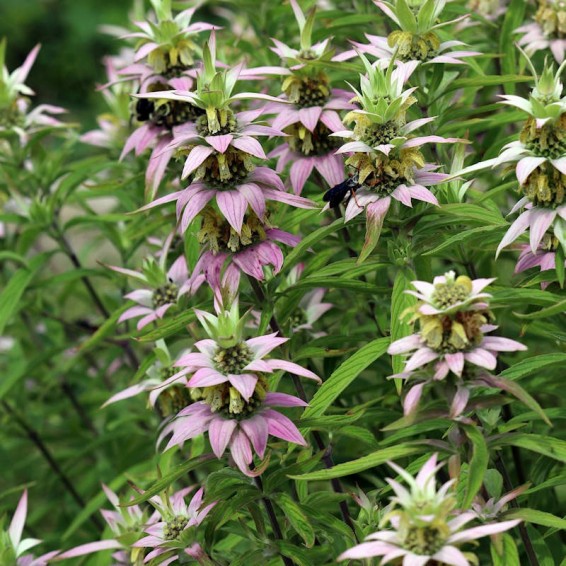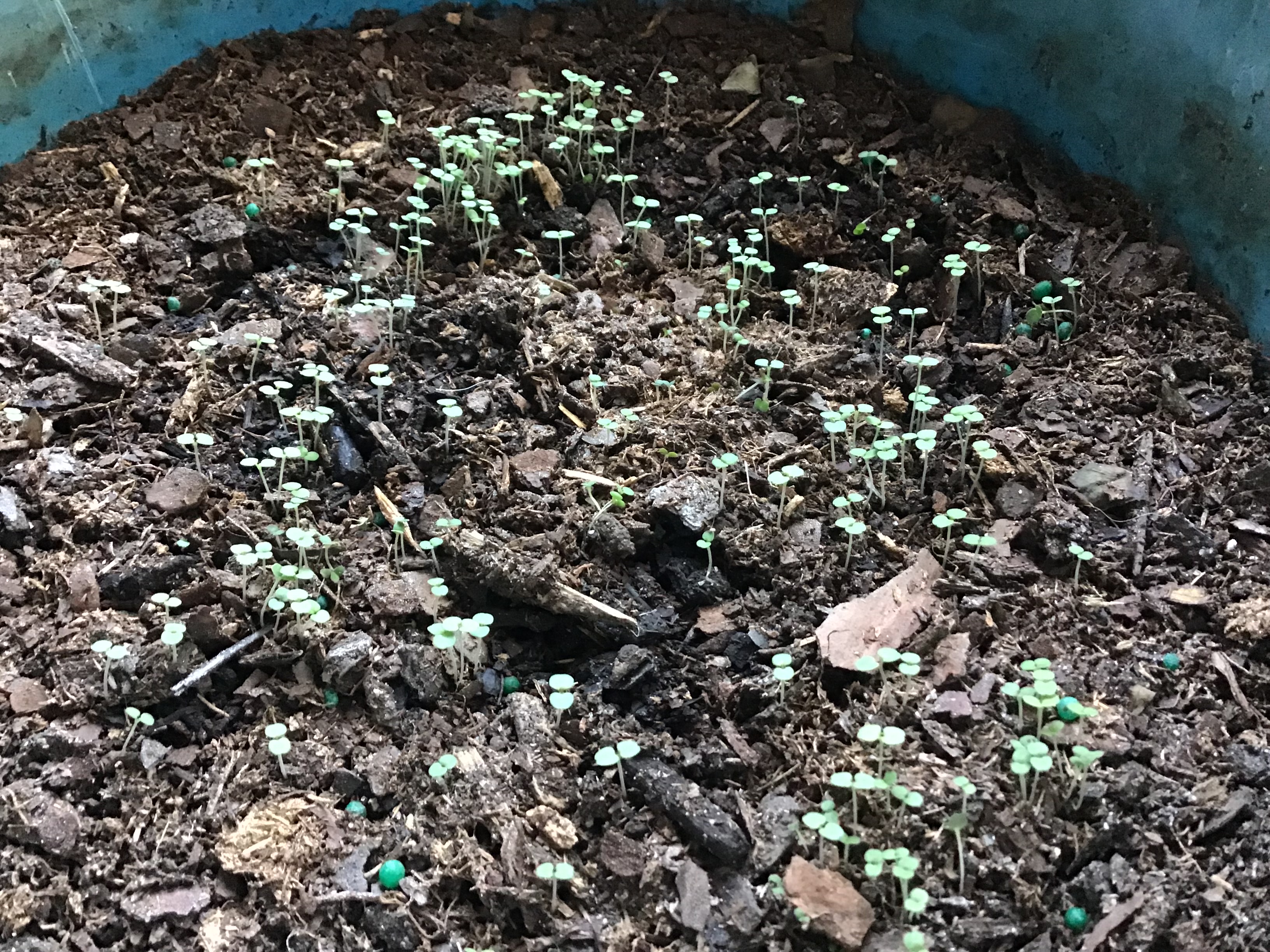Spotted Bee Balm Seeds
- HOW TO GROW
- FAST FACTS
- REVIEWS
HOW TO GROW
Sowing: Direct sow in early spring, pressing lightly into the surface of the soil. Keep the soil lightly moist until germination, which should occur within 10-20 days at temperatures from 60-70 degrees F. When the seedlings can safely be handled, thin or transplant for wider spacing. For an early start, start the seed indoors 6-8 weeks before the last frost and transplant outdoors.
Growing: Water young plants occasionally. Mature plants prefer well-drained soil and can tolerate drought well. Too much moisture or overcrowding can cause mildew or other fungal diseases. This plant may self-seed, and often spreads by rhizomes. These blossoms attract hummingbirds, bees, and butterflies. Deadhead for the most blooms. After 2-3 years, the plants can be divided.
Harvesting: For cut flowers, choose stems with flowers that have just opened. Strip the foliage that will fall below the water level, and place in water immediately.
Seed Saving: When the flower spikes begin to dry and turn brown, remove them and spread them out to dry; thresh them to remove the seed. Shaking the entire plant's seed heads into a container is also effective, but the process should be repeated daily until all the seed has matured. Store the seed in a cool, dry place.
FAST FACTS
Common Names: Horsemint, Spotted Beebalm, Bee Balm
Latin Name: Monarda punctata
Species Origin: US Native Wildflower
Type: Native Wildflowers
Life Cycle: Biennial
USDA Zones: 3, 4, 5, 6, 7, 8, 9, 10
US Regions: Arid/Desert, Plains/Texas, Midwest, Northeast, Southeast
Seeds per Ounce: 92,000
Stratification: No Stratification
Germination Ease: No Stratification
Sunlight: Full Sun
Height: 24 Inches
Color: Cream, Pink, Purple
Bloom Season: Blooms Late Summer, Blooms Early Fall
Uses: Attracts Pollinators, Attracts Honeybees, Attracts Butterflies, Hummingbirds, Aromatic, Cut Flowers, Deer Resistant
Safe seed packets
Well packed in small zip shut bags. Lots of seeds in the smallest order available.
Wonder packaging
Products came very quickly, beautifully packaged.
DESCRIPTION

HOW TO GROW
Sowing: Direct sow in early spring, pressing lightly into the surface of the soil. Keep the soil lightly moist until germination, which should occur within 10-20 days at temperatures from 60-70 degrees F. When the seedlings can safely be handled, thin or transplant for wider spacing. For an early start, start the seed indoors 6-8 weeks before the last frost and transplant outdoors.
Growing: Water young plants occasionally. Mature plants prefer well-drained soil and can tolerate drought well. Too much moisture or overcrowding can cause mildew or other fungal diseases. This plant may self-seed, and often spreads by rhizomes. These blossoms attract hummingbirds, bees, and butterflies. Deadhead for the most blooms. After 2-3 years, the plants can be divided.
Harvesting: For cut flowers, choose stems with flowers that have just opened. Strip the foliage that will fall below the water level, and place in water immediately.
Seed Saving: When the flower spikes begin to dry and turn brown, remove them and spread them out to dry; thresh them to remove the seed. Shaking the entire plant's seed heads into a container is also effective, but the process should be repeated daily until all the seed has matured. Store the seed in a cool, dry place.
FAST FACTS
Common Names: Horsemint, Spotted Beebalm, Bee Balm
Latin Name: Monarda punctata
Species Origin: US Native Wildflower
Type: Native Wildflowers
Life Cycle: Biennial
USDA Zones: 3, 4, 5, 6, 7, 8, 9, 10
US Regions: Arid/Desert, Plains/Texas, Midwest, Northeast, Southeast
Seeds per Ounce: 92,000
Stratification: No Stratification
Germination Ease: No Stratification
Sunlight: Full Sun
Height: 24 Inches
Color: Cream, Pink, Purple
Bloom Season: Blooms Late Summer, Blooms Early Fall
Uses: Attracts Pollinators, Attracts Honeybees, Attracts Butterflies, Hummingbirds, Aromatic, Cut Flowers, Deer Resistant
Reviews
Review
Safe seed packets
Well packed in small zip shut bags. Lots of seeds in the smallest order available.
Review
Wonder packaging
Products came very quickly, beautifully packaged.







